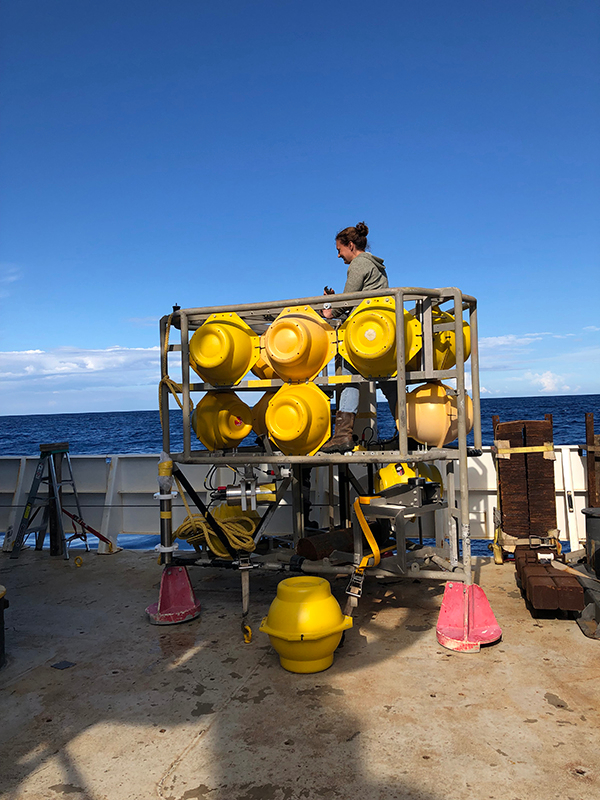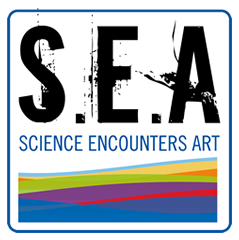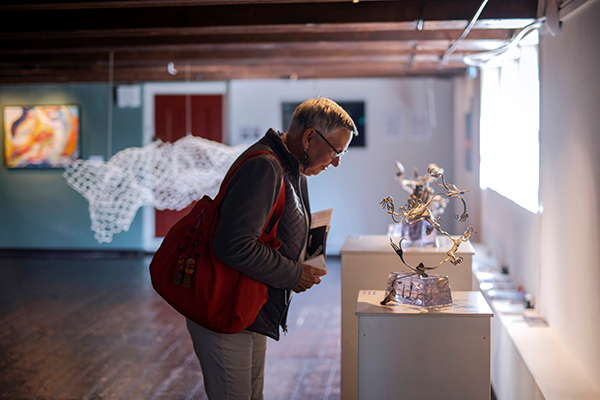Koude koralen in een hotspot in de diepzee
~~~ for english scroll down ~~~
Marien geoloog dr. Furu Mienis is geobsedeerd door koralen. ‘En dan niet die kleurige, tropische koralen die je op de vakantiefoto’s van je duikende vrienden ziet. Ik bestudeer koralen die op een diepte groeien waar geen licht meer is, dus vanaf 250 meter diepte. Dat is een onvoorstelbaar spannend onderzoeksterrein. Nog maar 5% van die diepzee is in kaart gebracht. Eerder dit jaar hebben we samen met een internationaal team van biologen nog een heel groot rif ontdekt, niet in een of andere obscure uithoek, maar gewoon net iets uit de oostkust van de Verengde Staten! En ook op een paar honderd mijl uit de kust van Ierland ligt op 500 tot 1.000 meter diepte een prachtig, koud en donker koraalrif.’
Kleurloos
Tropisch koraal krijgt zijn mooie kleuren door de algen die samenleven met de koraaldiertjes. ‘Maar als je koraal vindt op een diepte waar geen licht doordringt, dan vind je daar per definitie ook geen levende algen. Toch hebben mijn koralen nog wel mooie kleuren, vooral rood. Waarom dat zo is weten we eigenlijk niet. Ze zijn ook heel mooi vertakt. In plaats van de steen- of hersenvormen die je in de tropen ziet, hebben mijn koralen vaak lange takken, om bijvoorbeeld algen uit het water te kunnen vangen. Dode algen, die naar de bodem zijn gezonken, wel te verstaan.’
Koolstof en biodiversiteit
De toeristische waarde van koraal in de diepzee is nagenoeg nul, weet Mienis. ‘Het heeft wel een heel grote waarde voor de biodiversiteit. Diepzeekoraalriffen zin vaak hotspots van biodiversiteit. Er zit daar veel leven, voor een deel zelfs nog onbekend leven. Bovendien is diepzeekoraal een onderdeel van de koolstofboekhouding en daarmee van het klimaat. En sinds kort weet ik ook dat diepzeekoraal kunstenaars kan inspireren; tot een menselijke impressie van een levend koraalrif aan toe!’
Meer infomatie over het diepzee onderzoek van Furu Mienis vind je hier.
Cold corals in a deep-sea hotspot
Marine geologist Dr Furu Mienis is obsessed with corals. ‘And not the colourful, tropical corals you see on the holiday photos taken by your diver friends. I study corals that grow at depths where no light penetrates, so from around 250 metres below the surface downward. This is an incredibly exciting field of research. Only around 5% of the deep sea has been charted. Earlier this year, together with an international team of biologists, we discovered an enormous reef – not in some obscure corner, but just off the east coast of the United States! And a few hundred miles off the coast of Ireland, at a depth of 500 to 1,000 metres, there’s a beautiful, cold and dark coral reef as well.’
Colourless
Tropical corals get their beautiful colours from the algae that live in symbiosis with the coral animals. ‘But if you find coral at a depth where no light penetrates, then by definition you won’t find any live algae either. Nevertheless, my corals do have lovely colours, especially red. We don’t really know why that’s the case. They’re also very nicely branched. Rather than the stone or brain shapes you see in the tropics, my corals often have long branches, for example to filter algae from the water. Dead algae that have sunk to the bottom, that is.’
Carbon and biodiversity
The tourism value of coral in the deep sea is virtually zero, acknowledges Mienis. ‘But it does have enormous value for biodiversity. Deep-sea coral reefs are often hotspots of biodiversity. There’s a lot of life there, some of it unknown to science. Moreover, deep-sea coral is part of the carbon cycle and therefore of the earth’s climate. And recently I’ve learned that deep-sea coral can inspire artists: to create a human impression of a living coral reef!’
More information on Furu's research you will find here.


SEA Art tour CORAL LIVES
By fifteen Texel artists
In the summer of 2018, scientist Dr Furu Mienis gave a presentation on her research into the functioning of often vulnerable ecosystems in the deep sea, such as cold-water coral reefs, sponge grounds and canyons. A group of artists were inspired to produce creations drawing on their own disciplines and using different materials. These reflections depict the vulnerability of life in the deep sea. Read more...
